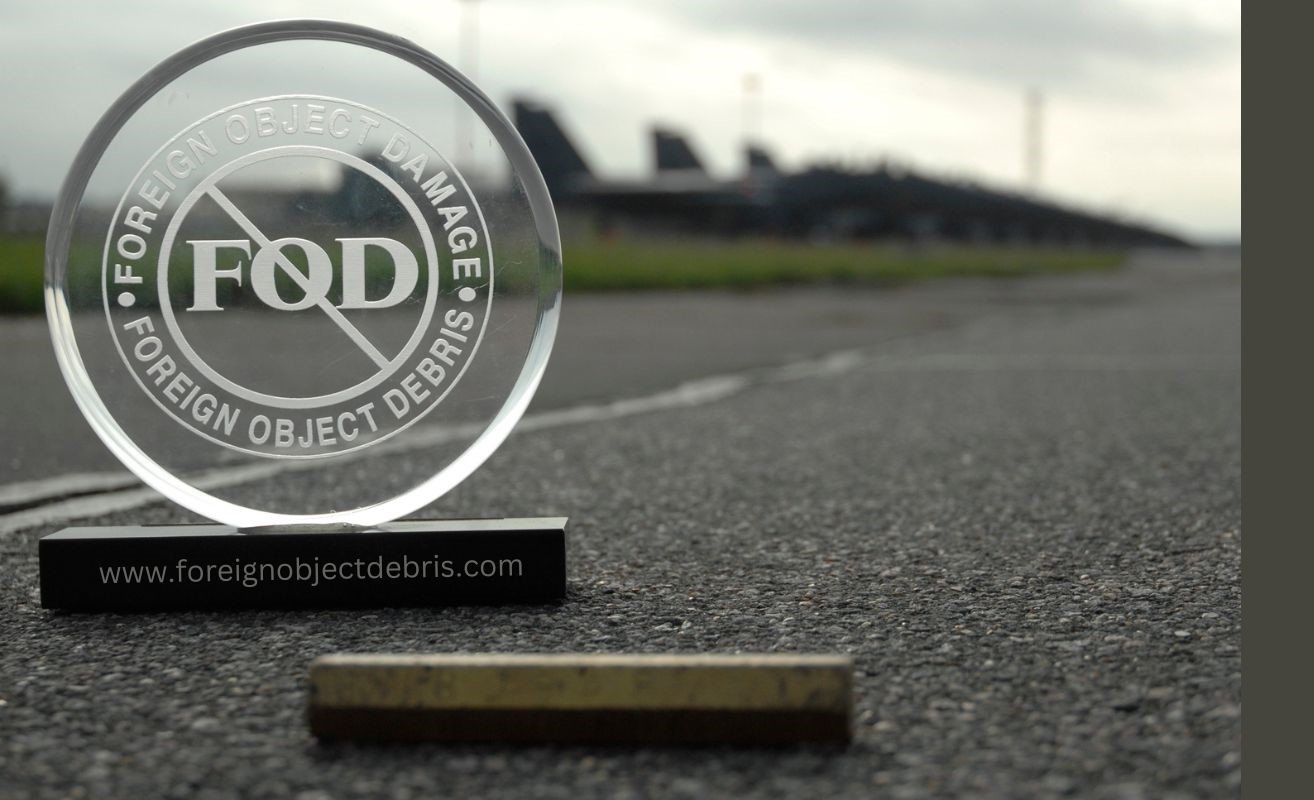
Foreign object debris (FOD) at airports can cause harm, costing airlines, airports, and tenants tons of money annually. FOD is any object that doesn’t belong in or close to airplanes and, as a result, can injure airport or airline personnel and harm airplanes. A FOD-prevention program of training, facility examination, maintenance, and coordination between all affected parties can minimize FOD and its effects.
A foreign object debris program to manage airport FOD needs to address four main areas:
- Training
- Examination by the airline, airport, and airplane handling agency personnel.
- Maintenance
- Coordination
Foreign Object Debris Program Training
All landing field, airline personnel, and airport tenants should receive training in identifying and eliminating FOD, including the potential consequences of ignoring it.
This training will supplement the general FOD awareness incorporated into the airside driver-training curriculum at several airports. FOD coaching for flight crews includes following the suggested procedures identified in the Flight Crew Operating Manual and pre- and post flight examination procedures covered throughout line training.
Practical training ought to stress safety to personnel and passengers, the hazards to instrumentation, the direct prices related to FOD harm, and, therefore, the indirect prices related to flight delays and rescheduling. It must also include procedures for removing and eliminating FOD at its source and must be strengthened through posters and signs. Recurrent training is needed to help maintain an awareness of FOD.
Foreign Object Debris Program Inspection
Airline personnel, when possible, must join the airport staff in daily airside inspections. This way, familiarity with local airfield conditions increases and promotes effective communication between the airport and airlines.
Maintenance
Maintaining control of FOD in a foreign object debris program includes using many methods:
- Sweeping.
- Magnetic bars.
- Rumble strips.
- FOD containers.
Sweeping – Sweeping can be done manually or with the airfield sweeper, which is the best instrument for removing FOD from the airside. The sweeper removes debris from cracks and pavement joints and should be utilized in all areas except for those that can be reached only with a hand broom. All airside areas, including aircraft maneuvering areas, aprons and gates, and the adjacent regions, should be swept back habitually. The places where ground support equipment (GSE) is staged should be swept back periodically.
Magnetic bars – These can be suspended beneath tugs and trucks to pick up metallic material. However, the bars should be cleansed often to prevent them from dropping the collected debris. Vehicles operating on the airside ought to be inspected periodically to confirm that they have no loose things which may fall off.
Rumble strips – Driving over rumble strips dislodges FOD from vehicle undercarriages. The stripes, which are 10 to 15 feet long, can be moved and used at transitions from the landside to the airside or adjacent to airside construction areas.
Conclusion
FOD containers should be placed at all gates to gather debris. The containers should be emptied frequently to prevent overflowing and becoming a source of FOD. Additionally, airport personnel can wear waist pouches to pick up trash. Evaluating the debris collected in containers and bags can reveal its sources and indicate where personnel and equipment need to be deployed for better management.
